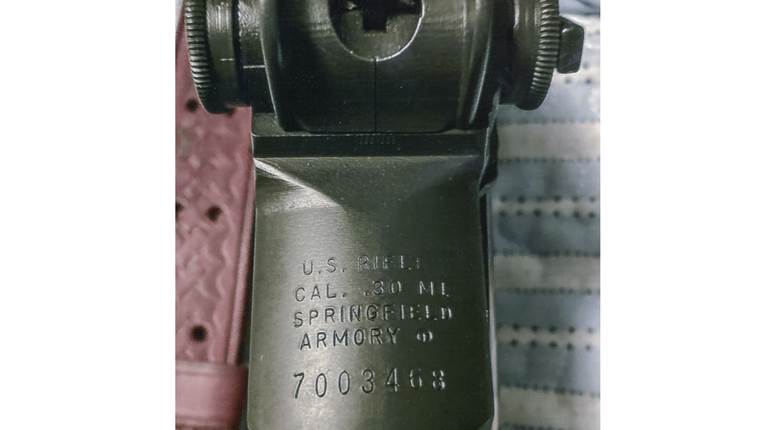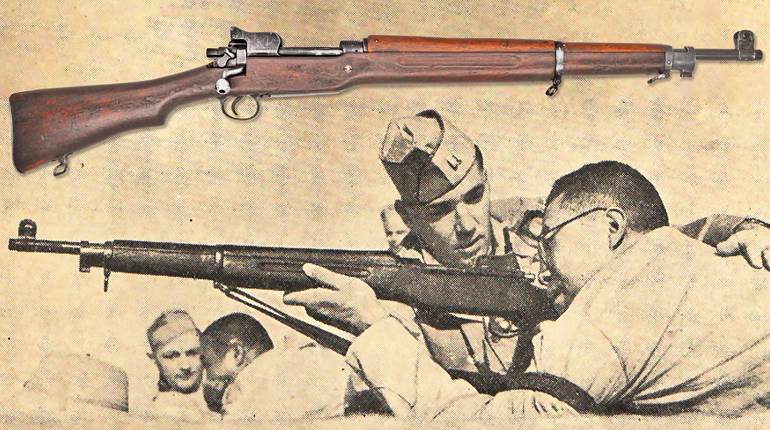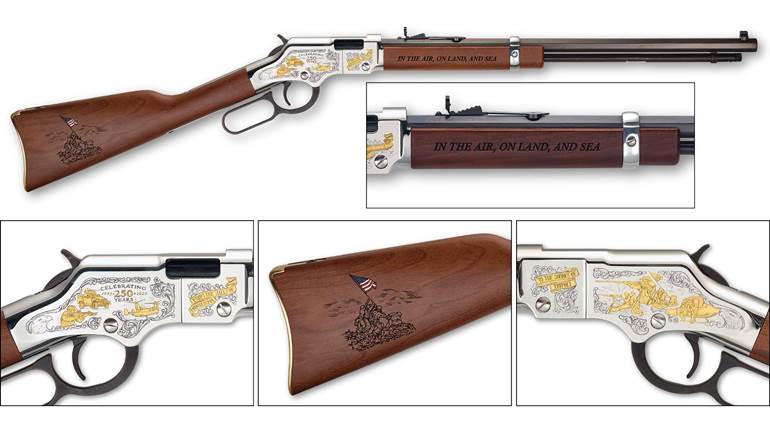
After the adoption of the U.S. Model of 1903 rifle, the U.S. Cavalry, like these troopers in Mexico in 1916, had to give up their short-barreled carbines. They tried the 20"-barreled cavalry carbine concept out again in 1921—but it never went beyond the prototype phase.
Prior to the 20th century, the “horse cavalry” was an integral part of the U.S. Army and played a role in every armed conflict from the American Revolution through the Spanish-American War. Traditionally, in addition to a saber and handgun, cavalry troopers were typically armed with a short-barreled carbine, which was better suited for use on horseback than the longer infantry rifle or musket. During the American Civil War, there were numerous types of cavalry carbines issued that were unique in their own right and, with the exception of the Spencer, did not necessarily have an infantry rifle counterpart. Beginning with the .50-70 Gov’t Model 1871 Ward-Burton, the Army issued several types of infantry rifles and cavalry carbines that had the same basic action and differed only in barrel length and stock configuration. The Army’s policy of issuing separate infantry rifle and cavalry carbine versions of the standardized service rifle continued with the various .45-70 Gov’t “Trapdoor Springfields,” the .45-70 Hotchkiss and through the tenure of the .30-40 Krag-Jorgensen. The last official U.S. military cavalry carbine was the Model 1899 .30-40 Krag, which had a 22" barrel as compared to the Model 1898 Krag rifle’s 30" barrel.

After the conclusion of the Spanish-American War of 1898, the U.S. Ordnance Dept. sought to develop an improved rifle to correct the deficiencies found to be inherent to the Krag. While the rifle that was eventually adopted as the Model 1903 Springfield was in development, both long-barrel and short-barrel prototypes were fabricated for testing. It was eventually decided that, if the new rifle was fitted with a 24" barrel, it could be an acceptable compromise between the Krag carbine’s 22" barrel and the Krag rifle’s 30" barrel. It would render moot the necessity of having to manufacture two separate models. For the most part, both the infantry and cavalry were satisfied with the new ’03, and the concept of separate rifles and carbines for the two branches of the Army seemed to be a thing of the past.
Nonetheless, despite this new policy of a single longarm for infantry and cavalry use, there was still a fondness in the minds of some of the former cavalrymen for the light weight and handiness of a carbine. In 1920, the Cavalry Board decided to revisit the concept of a carbine version of the Model 1903 rifle for evaluation and testing. A number of the veteran cavalry troopers were not enthusiastic about having to use a saddle scabbard for the rifle, and they thought that the old concept of carrying the rifle (or carbine) by means of a sling slung across the back would be preferable. It was also believed that the typically shorter ranges at which carbines were employed did not require a 24" barrel, thus a shorter barrel would suffice. Also, the fact that the cavalry did not require bayonets would reduce the weight due to the shorter stock and the elimination of the upper band. To this end, Springfield Armory records for 1921 reflected:
“Springfield Armory has completed an experimental cavalry carbine and shipped it to the President of the Cavalry Board at Fort Riley for test. The carbine has a 20-inch barrel with a short stock. It is fitted with special sling swivels on the left side in order that it may be carried slung across the cavalryman’s back in such a position that the bolt handle will be away from the man’s back.
“The carbine is fitted with a Lyman No. 48 sight modified so as to show graduations in yards instead of minutes. Each turn of the elevation screw equals five minutes. The knurled head on top of the elevation screw is divided into five divisions, each of which is equivalent to one minute. One turn of the windage screw is equivalent to four minutes or approximately one point of windage. Both the windage and elevation screws click for each minute of adjustment.
“It is found that the reduction in length of the barrel to 20 inches, instead of 24, reduces the muzzle velocity approximately 100 feet. The standard muzzle velocity is 2,700 feet per second while the muzzle velocity of the new weapon is 2,600 feet per second.
“Shortening the barrel had the effect of noticeably increasing the muzzle flash, especially when firing the rifle in a dim light.
“It is found that the rifle handled very easily and is exceptionally well balanced. The recoil is not noticeable [sic] greater than that of the service rifle. The accuracy of the sample was found to be excellent.”

It appears that only two prototype ’03 carbines were fabricated in 1921. The authorization to build them came from Col. T.L. Ames, as the floorplate of one of the prototype rifles is engraved “By Order Of/Col. T.L. Ames/May 1921.” Born Sept, 19, 1869, Thales Lucius Ames graduated the U.S. Military Academy at West Point in 1895, entering the Army as a second lieutenant and rising through the ranks until his retirement in 1933 as a colonel. Ames was the commanding officer of Springfield Armory from April 1920 to August 1923, during which time the two M1903 cavalry carbines were fabricated.
A standard Model 1903 rifle stock with a shortened fore-end was used to fabricate the prototype carbine as evidenced by a neatly fitted metal plate that covered the recess for the rear sling swivel. The 20" barrel was dated “6-21” and stamped “SA” (Springfield Armory) but did not have the Ordnance Dept. “flaming bomb” insignia as was the case with the standardized ’03 rifles. The barrel band was fitted with a special side-mounted sling swivel. The rear sling swivel was attached to the left side of the stock. This arrangement permitted the carbine to be slung across the trooper’s back with the bolt positioned away from the body. The carbine was fitted with a specially made wooden handguard. The only marking on the receiver ring was the serial number; “No. 2.” As with all Springfield Armory-made arms, the prototype ’03 carbine exhibited flawless workmanship.
Although the prototype ’03 carbines performed reasonably well in the testing, there wasn’t an overwhelming demand for them. Funding in the immediate post-World War I period was very tight, and the Ordnance Dept. was conserving all available funds for the development of a semi-automatic service rifle that was deemed to be a higher priority than a limited-issue cavalry carbine. While there was little chance that the 1921 ’03 carbine would have been adopted by the U.S. Army, it nevertheless was a most fascinating arm and marked the end of any further attempts to resurrect a cavalry carbine for the Army.







































